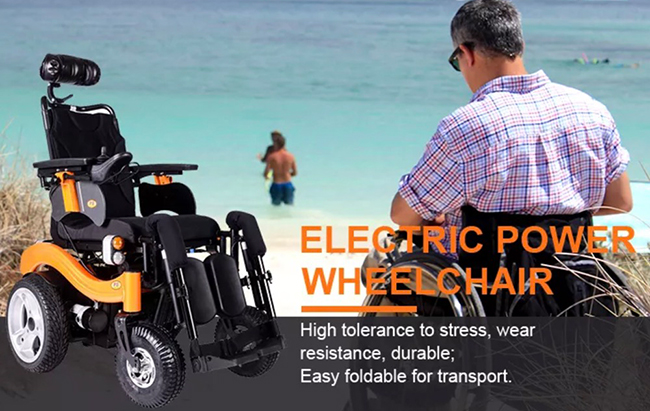Characteristics of the European Home Care Market’s Demand for Electric Wheelchairs
I. Market Foundation: Policy and Demographics Drive Demand Expansion
The booming European electric wheelchair market is no accident; it’s the inevitable result of a rapidly aging population and a well-developed social security system. According to statistics, the proportion of people aged 65 and over in major European countries exceeds 24%, and Germany projects that nearly one-third of the population will be over 60 by 2030. This has directly created a massive demand for mobility assistance. The incidence of mobility impairment among the elderly exceeds 47%, and the number of severely disabled elderly people continues to grow at an annual rate of 5.8%.
Strong policy support further ensures the realization of this demand. In core markets like Germany and France, nursing insurance coverage reaches as high as 92%. Some countries include reimbursement for the purchase of electric wheelchairs, effectively lowering the financial barrier to home care. Furthermore, the EU’s Green Deal mandates that 90% of electric wheelchairs be upgraded to energy efficiency by 2025. Nordic countries have also launched carbon footprint tracking systems, with mandatory carbon labeling required starting in 2027. These policy directions are profoundly influencing product design.
II. Core Product Requirements: Safety First, Experience First
The demand for electric wheelchairs in European home care settings has long surpassed the basic concept of “mobility,” forming a multi-tiered demand system with safety at the core and experience as the key upgrade path.
1. Safety Performance: The Uncompromising Bottom Line
European consumers prioritize safety when purchasing, which is reflected in three key dimensions:
Structural Safety: They must meet the stringent electromagnetic compatibility requirements of the new EU EN 12184:2022 regulations to prevent interference with home medical devices. The braking system must have multiple protections, with anti-skid tires and an emergency stop button becoming standard.
Battery Safety: Lithium batteries must have an energy density exceeding 350Wh/kg and must also pass puncture resistance and high-temperature resistance tests. Some families prefer models that support fast charging (full charge within 2.5 hours) and have overcharge protection.
Safety in Use: Intelligent obstacle avoidance systems have become a must-have feature in mid- to high-end products, capable of identifying obstacles such as tables, chairs, and thresholds in the home environment, reducing the risks faced by elderly people living alone.
2. Intelligence and Humanization: Improving the Quality of Independent Living
European users’ pursuit of “autonomous care” is driving product upgrades toward intelligent functionality:
Multi-controllers: In addition to traditional joysticks, demand for voice control (supporting multiple languages, including English and German) and mobile app-based remote control is surging, facilitating operation for users with limited hand mobility.
Health Monitoring: Models with integrated IoT sensors can track the user’s heart rate and sitting posture data in real time, syncing this data with family members or caregivers via an app, making them ideal for remote home care scenarios.
Personalized Adaptation: Modular designs are highly sought after, offering adjustable seat height and backrest angle, and even customizable carbon fiber frames tailored to the user’s body shape, ensuring a balance of comfort and lightweight design.
3. Scenario Adaptation: Considering both home and travel
The core scenario of home care dictates that products must balance indoor flexibility with outdoor practicality:
Indoor Requirements: The width must be kept below 60cm to accommodate the narrow corridors and doorframes common in European homes, with a smaller turning radius preferred. Outdoor Requirements: The range must be at least 50 kilometers, suitable for daily shopping, strolls in the park, and other activities. The tires must provide shock absorption and be suitable for use on unpaved surfaces such as cobblestone roads.
Portability: Foldable models are in high demand in the rental market and for short-term rehabilitation. They must fit in the trunk of a family car when folded, and their weight should ideally be under 25 kg.
4. Sustainability: Responding to green consumption trends
Driven by EU environmental policies, “green attributes” have become a new competitive advantage:
Environmentally friendly materials: Recyclable carbon fiber and environmentally friendly plastics should be prioritized, avoiding the use of hazardous materials containing lead and mercury. RoHS and WEEE environmental standards must be met.
Energy Efficiency: Motor efficiency must be improved by at least 25%. Some brands have introduced “Eco-Mode,” which reduces power consumption by 15% while maintaining the same range.
III. Regional Demand Differences: Targeted Core Market Layout
The European market is not monolithic, with distinct regional demand priorities:
Region
Core Demand Characteristics
Price Sensitivity
Representative Market Cases
Western Europe (Germany, France, and the UK)
High-end intelligence, personalized customization, brand reputation
Low
German users are willing to pay a 35% premium for voice control
Nordic (Sweden, Denmark)
Transparent carbon footprint, energy efficiency rating, minimalist design
Medium
Mandatory product labeling of full lifecycle carbon emissions data
Eastern Europe (Poland, Czech Republic)
Cost-effectiveness, basic safety, durability
High
Mid-range models (€1,500-2,500) account for 57% of the market
IV. Purchasing Decision Logic: Certification and service are more important than price
When purchasing an electric wheelchair, European families prioritize “certification → service → product → price”:
Compliance Certification: CE certification is essential for market entry, and MDR certification is essential for product quality. Products certified under medical device regulations are more likely to gain consumer trust, despite the certification process taking up to 14 months.
After-sales service: A minimum two-year warranty is required, with core components (motors and controllers) warrantied for up to three years. Localized service locations are crucial, and brands offering on-site repairs within 48 hours are more competitive.
Brand endorsement: Brands with a medical device manufacturing background and partnerships with European healthcare institutions are more popular, and users actively seek brand ratings from organizations like Frost & Sullivan.
Post time: Sep-19-2025


